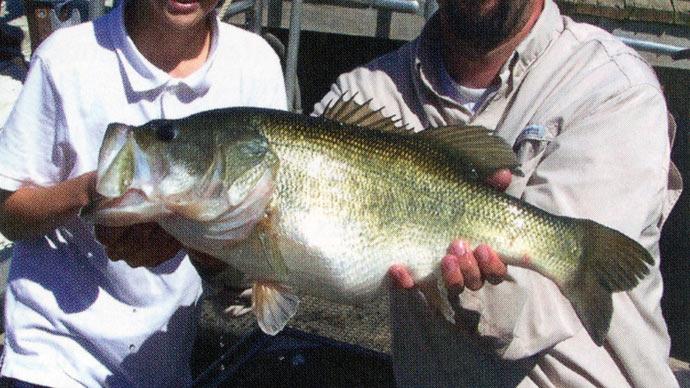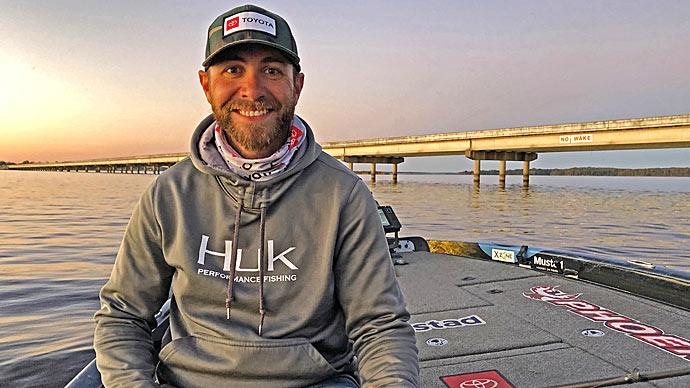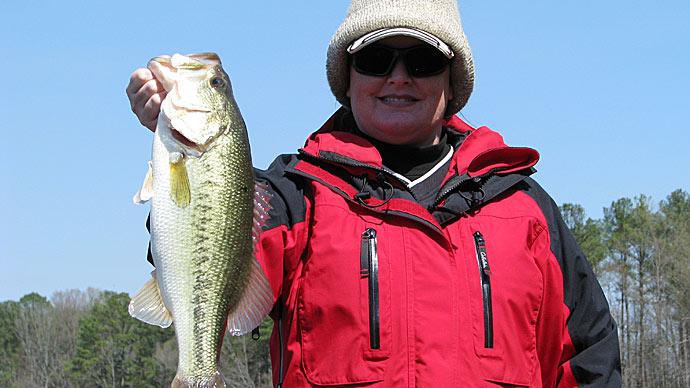
Few bass fishing lakes have the reputation and legendary stories as Lake Fork, Texas. It burst onto the scene when the Lake Fork Dam impounded it in the 1980s. Since then, it has produced countless giant bass. The crown jewel of the bass fishing mecca is Texas and is closely managed with protective slot limits and stocking Florida-strain largemouth bass. This is why it continues to produce colossal bass year after year.
Fishing Lake Fork
The famous lake is home to submerged trees just about everywhere you look and across the lake. The standing timber is always in play, and with so much of it, sometimes it pays to look for something that stands out from the crowd. This could be the isolated tree set back in deeper water or the lone standing tree on a point. Finding isolated pieces can pay big dividends with so much wood in the lake.
Aside from the wooded cover, the lake has some aquatic vegetation, which is nearly always a way to ensure that you are around the bass. The same goes for rocky banks, ripraps, and docks; they can all hold fish at times.
The other key to fishing Lake Fork is selecting the right areas and creek. Plenty of creeks and creek channels are on the lake, and some are responsible for kicking out bass yearly. Glade, Caney and Little Caney, Mustang and Little Mustang, and Birch creeks are well-known and very popular. There are many more, and each has a defined channel on which to base your fishing. The creek channel and how it relates to the shoreline and how close it comes can be essential for finding the prime areas.
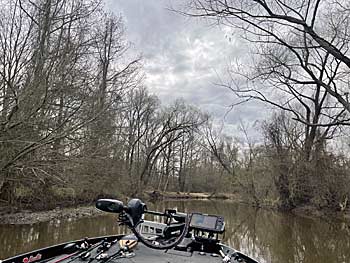
Early in the year, around the spawn, you can find bass in ultra-shallow water, and many of the extreme backs of creeks and small pockets will hold bass. As the spawn concludes, bass will push back towards the main lake and focus on areas close to the creek channels, where anglers can find some fish throughout the rest of the year.
Fishing Strategies
Lake Fork is full of bass, and there are many ways to catch them. Starting early in the year, traditional springtime lures like vibrating jigs, soft plastics, and spinnerbaits are top producers as many of the bass in the lake will be shallow and around cover.
As the spawn wraps up and many of the bass move to deeper water, fishing a deep-diving crankbait can be an excellent way to catch both numbers of fish and a real chance at big bass. Other popular tactics include swimbaits and giant soft plastic worms for deeper fish and topwater walking baits and frogs for the bass that remain in shallower water.

Once the seasons switch from summer to fall, many of the bass in the lake follow. This coincides with the baitfish movement as the shad push into the shallow water flats. This opens up a world of possibilities for techniques, and popular shad imitators like spinnerbaits, swimbaits, topwaters and lipless crankbaits are some of the best options.
Navigating the Lake
One thing that makes Lake Fork so good is what makes it dangerous. The lake is full of timber that holds bass and sometimes makes it tough to drive a bass boat. There are boat lanes along much of the lake, but one of the boat lane cards with boat lanes mapped is extremely useful for running the lake. These cards include trails and waypoints and can be purchased online and downloaded to transfer to your marine electronics with an SD card quickly.
With the marked lanes and a map card, you should still run the lake at your own risk and be a little more cautious. Even fishing with your trolling motor will lead to several bumps into the wood during a day of fishing on Lake Fork. It can be hazardous, and there are plenty of fiberglass repair shops in the area for a reason.
If you are uncomfortable with possibly putting your boar in harm’s way, many quality guides take clients out on the water. All the local marinas and tackle shops can quickly point you in the right direction of a good bass guide and help make your trip memorable.
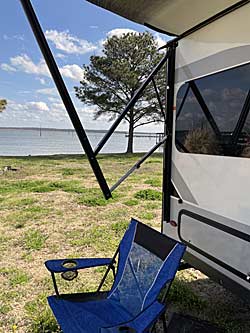
Staying at Lake Fork
There is no shortage of places to stay at Lake Fork as thousands of visitors visit the lake every month. It is a popular destination, and the area's businesses cater to anglers. Many marinas have lodging options, including house rentals, motels, and RV parks. There are also boat launches just about everywhere you look and plenty of bass boats driving the roads around the lake.
Lake Fork Marina is one of the best and most popular places to stay, and they have everything you need on-site. A general store, tackle store, boat slips, gas pumps, and restaurant will provide what you need, and there are more restaurants, gas stations, and tackle stores a short drive from the marina.
Lake Fork is highly regarded as one of the top bass fisheries in the nation. Even though anglers from across the country constantly fish it, it still produces big bass. When fishing Lake Fork, you always have the chance at a fish of a lifetime, which keeps people coming back every year. It's a “bucket list” fishery, and fishing here is something every bass angler should experience at least once.


